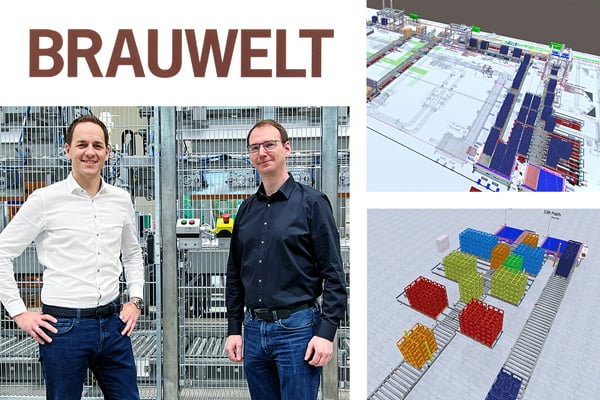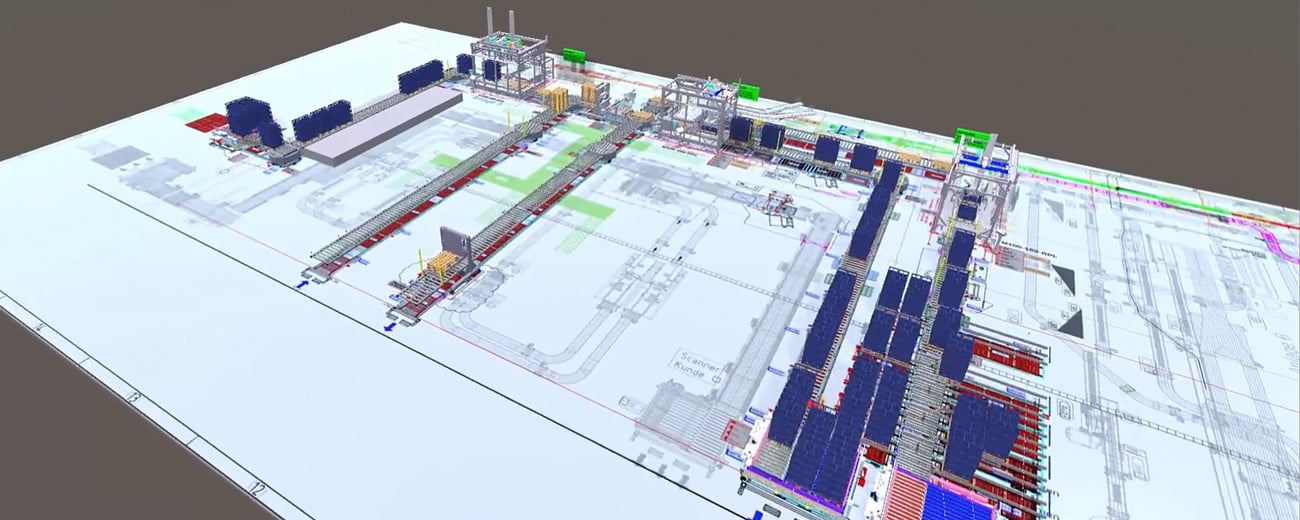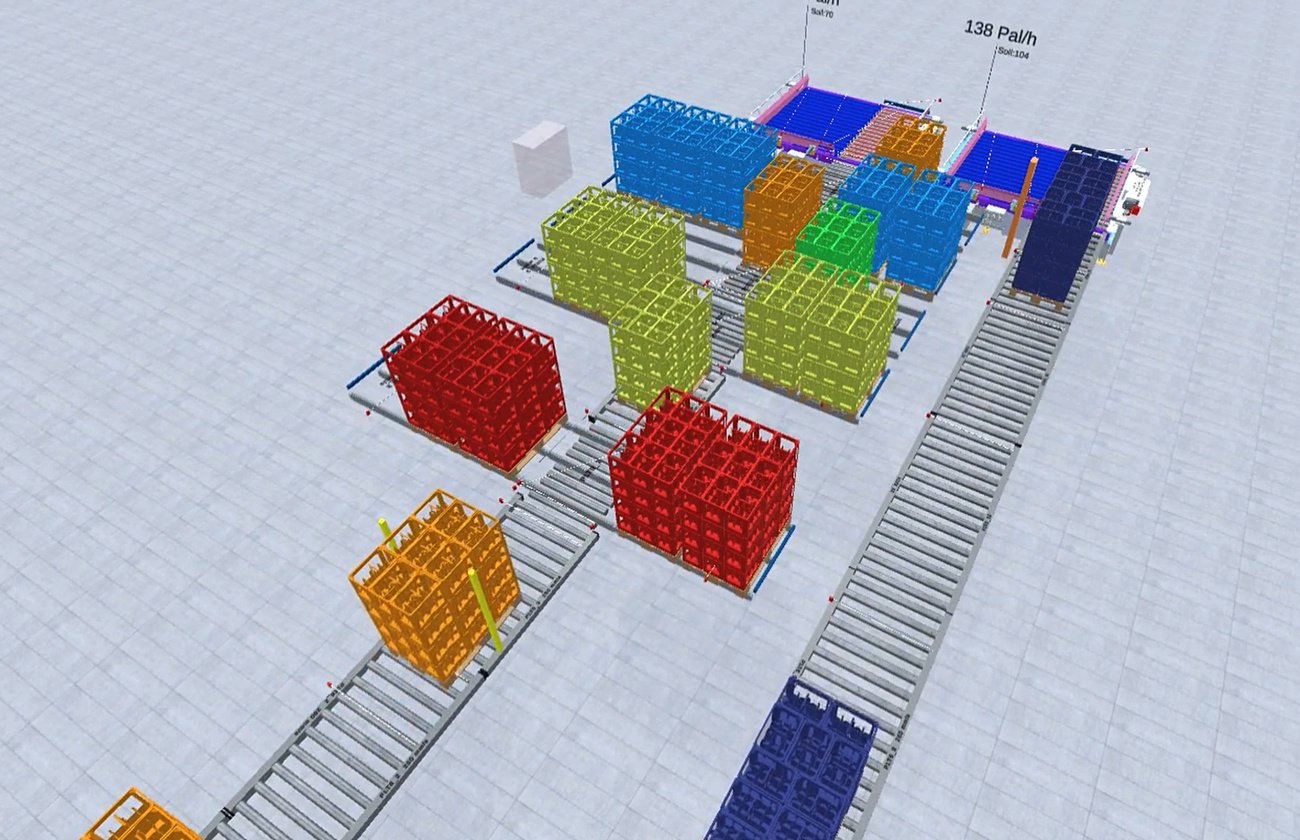
Act beforehand instead of reacting afterwards
How the consistent use of digital tools generates added value
Predictions are notoriously difficult because they concern the future. However, this much has long been certain: after steam, electricity and automation, digitalization will once again revolutionize entrepreneurial activity. "Digital twins", "virtual commissioning", "AI" and "cloud-based management" are key tools here, which are discussed in a practical way in the following article.
Digital twin
A "digital twin" is a simplified virtual image of a machine or system. The twin is reduced to the essential features that are required for use in the context of "virtual commissioning". For this purpose, the basic physical behavior of a machine or system must be mapped so that the function of its software can be tested.
"Virtual commissioning" therefore means first and foremost: software testing and analysis using a digital twin. This tool is primarily used for a designed but not yet physically existing machine or system, as well as for a delivered machine or system.
But what does this actually mean in reality, where is the added value for both the customer and the machine manufacturer? It is worth taking a look back at the conventional engineering process. This starts with mechanical design, followed by software creation, internal and external commissioning and updating the software modules. This path is followed step by step; parallel work is not planned. If upstream problems occur, they must be eliminated downstream under ever-increasing time pressure - i.e. workload. This is the only way to keep to the agreed schedule.
"Virtual commissioning" parallel to construction
Virtual commissioning, on the other hand, takes place well before machine delivery in the design department. Ideally, it takes place at the same time as the mechanical and electrical design. Here, "virtual commissioning" shows, for example, whether an additional sensor is required. And it does so before the machine's design documents are handed over to the next departments. This is an immense advantage, as subsequent changes cause disproportionate effort and costs according to the rule of ten. This rule states that an error that is only found and rectified during factory commissioning is ten times more expensive than if the correction is made in the software design during virtual commissioning.

With virtual commissioning, the interaction between the transport system and machines can be observed and optimized at plant level in advance.
Computer presents PLC with specific tasks and challenges
In addition, "virtual commissioning" answers the central question: Is the machine controlled by the real PLC according to the situation? In addition to normal operation, the reaction to possible faults is a key part of the test. The actual PLC of the machine is presented with specific tasks and challenges by a simulated model. For example, the virtual model sends sensor signals to the PLC, which then runs through the corresponding program sequences and controls the actuators, such as electric drives, in the virtual model. The designer can therefore see immediately whether the machine and control sequences interlock. Or whether, in the event of a simulated sensor fault, all fault messages are actually programmed in such a way that the operator understands what is happening.
In short, the result of the simulation is a real win-win situation. For the customer, the downtime from dismantling the old system to restarting production is kept as short as possible. On the other hand, the machine manufacturer can use its capacities flexibly and therefore more effectively because the employees are not tied to the serial production sequence of a machine. They can work in free time windows and detached from the finished physical machine - in complete contrast to the previous constraint because the fully assembled machine is currently in the production hall.
Virtual training and predictive maintenance as further remote goals
But that's by no means all: one idea is to also provide training via "virtual commissioning". The operator should already know what he has to do and when during commissioning. Another project concerns the recording of machine data at the customer's premises. The aim here is a kind of 24/7 ECG of the machine. The data is recorded in real time and stored in the machine. In the event of remote service, the machine manufacturer accesses the data and can, among other things, evaluate it graphically or run it as a retrospective simulation on the virtual model. This makes it possible, for example, to understand why the machine had a fault. This is important, for example, if the customer can only vaguely describe a fault because the fault could not be observed. The solution found is then installed on the system via remote maintenance. As a result, there is no need for travel or physical work at the customer's premises.
This "tracking" also makes it possible to detect when a motor or shaft becomes sluggish, i.e. when the drive requires more electrical energy. Keyword: predictive maintenance. An independent tool is being considered here that monitors and compares the values and triggers the service case in the event of deviations. After all, as we all know, it is much better to act in advance than to react in an emergency.
AI "mapped" machine signals
Another research project in which the EOL Group is involved concerns the development of software that "maps" machine signals fully automatically using "artificial intelligence". To explain: for example, the PLC supplies a sensor signal such as operating hours, which must be correctly classified in the higher-level systems. This classification is currently still done manually, there is no alternative. The amount of work that "artificial intelligence" can save is correspondingly high.
But back to the present, to the actual execution of a project on the customer's construction site. Traditional project management works through defined milestones one after the other until the job is finally completed successfully - in other words, as with engineering, serially instead of in parallel.

Bottlenecks in complex sorting lines are identified and eliminated in advance.
Modern project management uses a virtual information and communication platform
Post-modern project management, on the other hand, involves team-oriented work on a virtual information and communication platform. This digital platform depicts the project status during the construction site phase, from delivery to commissioning, with the greatest possible transparency. Among other things, it graphically displays how many points are currently open, in progress or completed. Information can also be generated quickly and specifically using a filter function. Also worth mentioning is a digital material list that acts as a "push client".
The cloud is also an open communication and documentation platform. Each project partner can, for example, upload photos or videos, post next steps for discussion or prioritize individual points. This ensures that the status of all project components is always up-to-date and clearly understandable. Interactions on the further course of the project are immediately visible. This reduces friction and coordination losses and leads to a high degree of predictability. Firstly, this solution results in a maximum level of information for all employees, customers and suppliers involved. Secondly, relevant data is now found automatically and does not have to be laboriously searched for. Thirdly, all partners involved in the project achieve measurable added value in terms of effort and quality. And this is not a prediction of the future as stated in the introduction, but a practical experience gained in many projects successfully completed worldwide with EOL's own developments "Digital Twin", "Virtual Commissioning" and "LOP 4.0".

